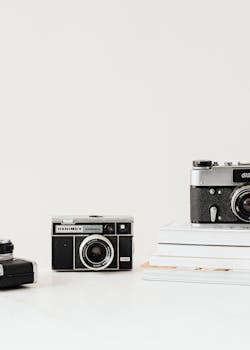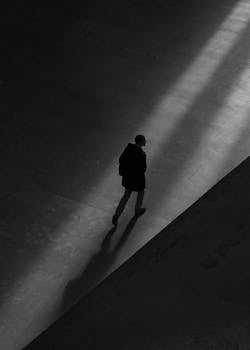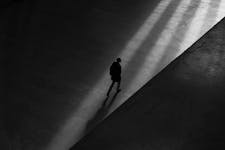
How Leading Lines Can Make Your Photos Better
You know when a photo really grabs your eye? Chances are it's thanks to a smart use of leading lines.
A strong photo needs a strong subject. Leading lines are a super simple yet powerful composition tool that help make sure the subject of your shot instantly gets the viewer's attention — no matter what you're photographing.
Take a look at the photo below. What is it that makes the subject really pop?
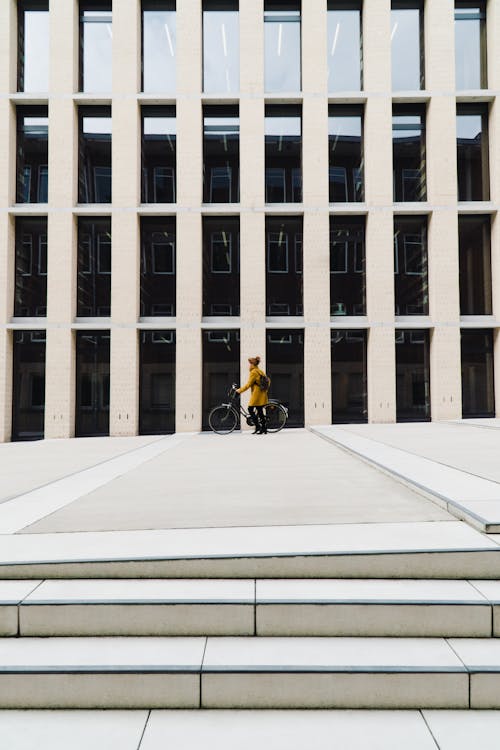
This shot is a classic example of leading lines.
Photo by Alex Fu · View Photo
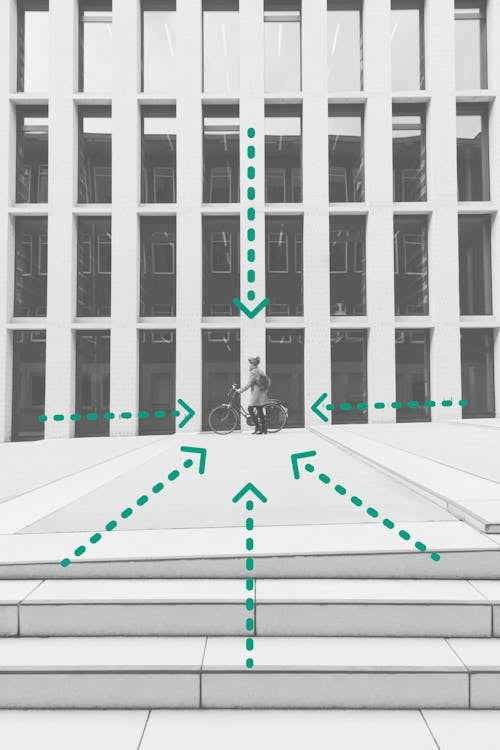
For one, Alex makes use of the rule of thirds to place his subject just slightly below the middle of the frame for increased visual interest. He also draws more attention to the bold yellow of the person's coat by juxtaposing them against a neutral-colored backdrop.
Most importantly, though, he uses leading lines. Let's take a close look at the pavement the cyclist is walking across: the lines converge towards the center of the photo, pointing right at the walking figure. The vertical lines of the building also draw the eye down to look at the person.
Everything in this photo is a message to the viewer, telling them to direct their gaze at the person walking. This is a perfect example of leading lines at work.
What are leading lines in photography?
Just as lines on the road tell your car where to go, leading lines in a photo tell the viewer where to look. They help draw the eye into the photo, creating a sense of depth, and also work to put more focus on the photo's subject.
You've probably also heard the term line of sight used to talk about photo composition. The line of sight in a photo is what leading lines are creating: a road for the eye to follow.
Leading lines can be literal lines visible within a photo, as in our example above. Or they can be invisible lines drawn by the objects within the photo, creating an implied path for the eye to follow.
If you want to tell stories with your imagery, leading lines are a good way to strengthen the message you're trying to convey. We'll go over some examples of this below.
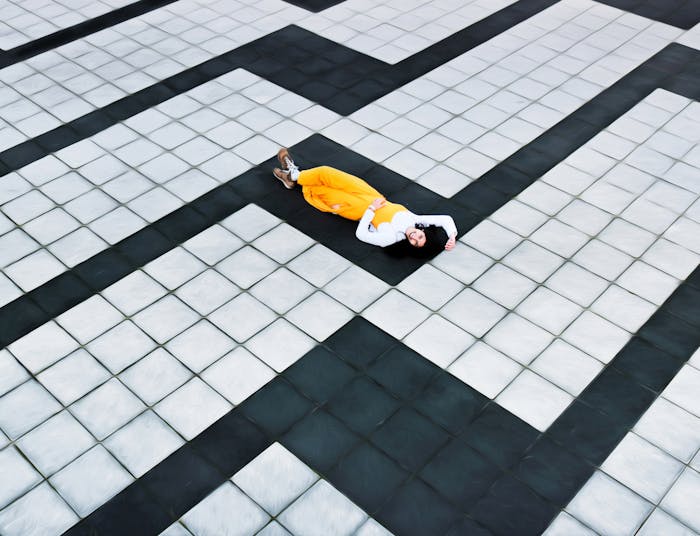
Getting creative with lines for a powerful portrait.
Photo by Ahmed Hariry Mahmoud · View Photo
Understanding the difference between visible and invisible leading lines
The most obvious way to make use of leading lines for a strong composition is to work with visible, actual lines within your shot.
What makes leading lines such an incredibly handy composition tool is the simple fact that they can be found literally anywhere you might snap a photo, from city streets to landscape views to your own living room.
That being said, you don't even need to find visible lines to use this technique. Many great photos make use of leading lines in a more subtle way, by arranging elements of the shot to direct the viewer's eye wherever the photographer wants it to go.
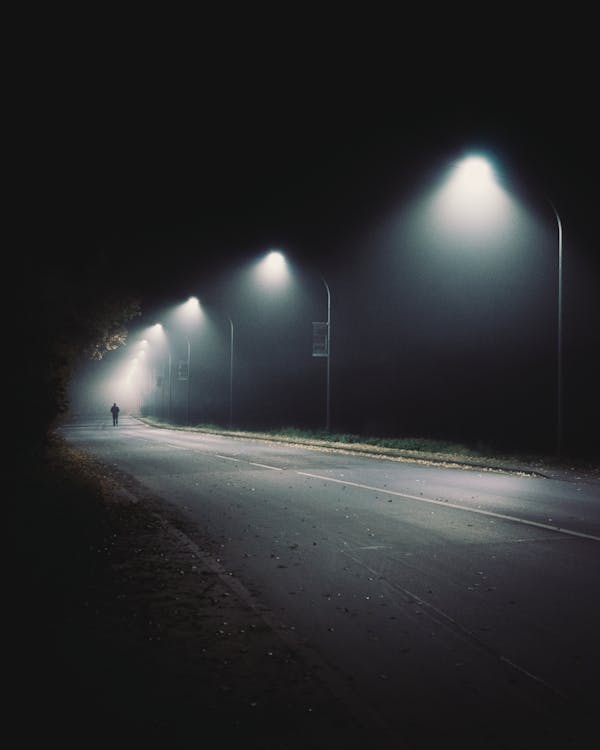
These leading lines amplify the lonely feeling of the shot.
Photo by Alex Fu · View Photo
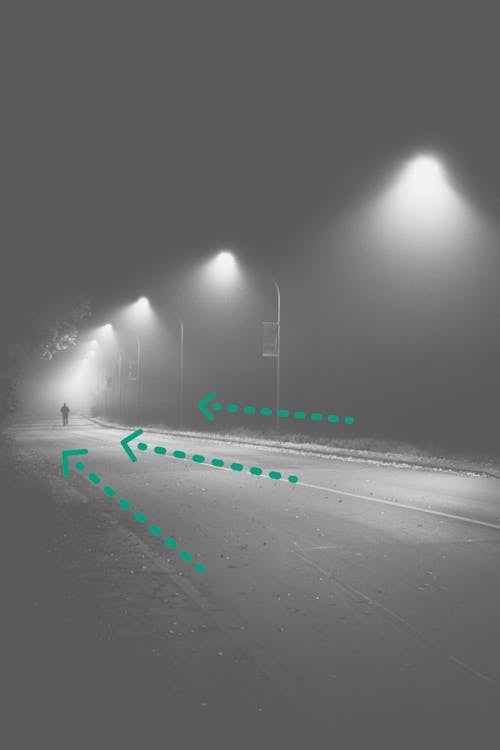
This photo makes great use of both visible and invisible leading lines for a memorable composition.
Alex Fu again uses leading lines powerfully in this foggy photo. He combines the literal line on the road with the implied line created by the glowing streetlights for two leading lines pointing right at the solitary person in the distance.
This use of the rule of thirds in conjunction with leading lines really helps create a strong photo.
Leading lines in street photography
In urban environments, there are tons of straight lines all around you that can make for a terrific leading line in a photo. Streets, sidewalks, telephone poles, fences, and buildings all offer ample opportunity for making use of leading lines.
Take a walk in your nearest city or town with your camera and pay close attention to all the lines you see around you — you're sure to start spotting great compositions once you keep this top of mind.
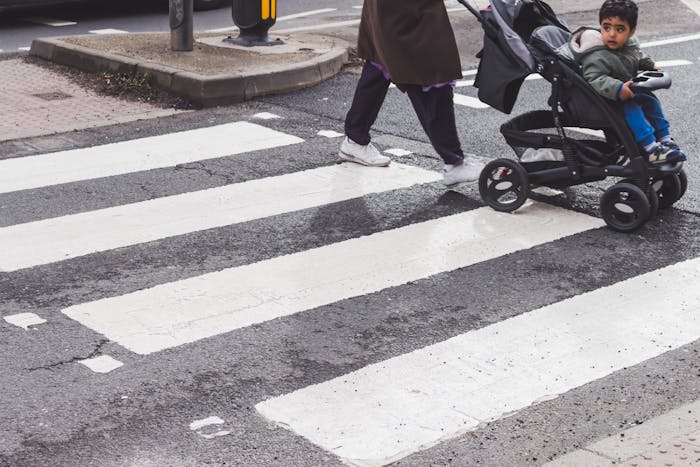
The white lines of the crosswalk effectively lead the eye to the stroller in this simple shot.
Photo by Dom J · View Photo
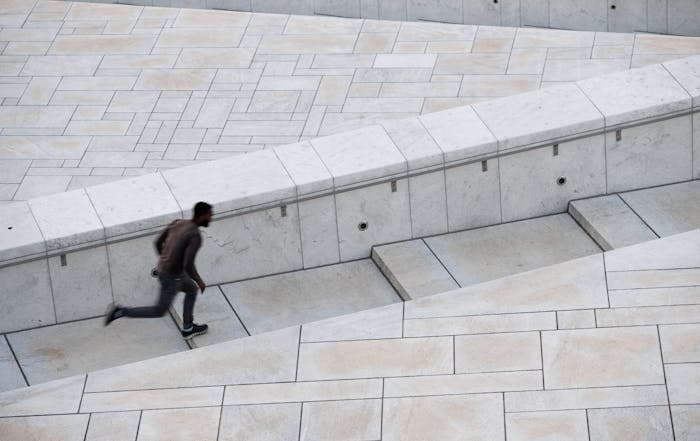
The horizontal lines of the walkway frame the running man and increase the feeling of motion here.
Photo by Ludvig Hedenborg · View Photo
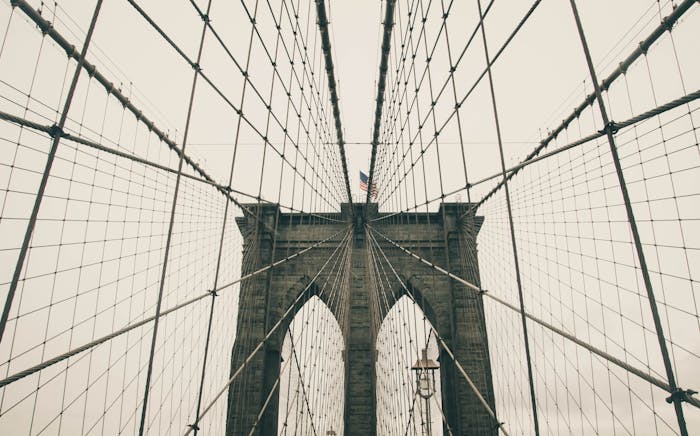
The wires of the Brooklyn Bridge create a clear path to the arches and the flag here.
Photo by Paula Nardini · View Photo
Leading lines in landscape photography
Architecture and street scenes make for great leading line compositions, but nature is also a great place for these shots. Rivers, mountains, waves, rays of sun, and trees are all good options for natural leading lines. You can also use human-made structures within nature for effective landscape compositions, focusing on the lines created by roads, train tracks, power lines, and so on for impactful images.
Try going out to shoot in the nearest natural area close to you and keep an eye out for lines within the environment. You can even try this in your own backyard and experiment with fencing, paving stones, and garden furniture, or take a walk to a nearby park.

This Big Sur capture makes neat use of leading lines created by the surf.
Photo by Kyle Collins · View Photo

The foreground path in the grass subtly directs the gaze to the mountain in the background.
Photo by Todd Trapani · View Photo

A minimalist use of leading lines: the mountain edges send the eye up towards the moon.
Photo by Kasuma · View Photo
Leading lines in portrait photography
You might not immediately notice the leading lines at work in a portrait photo, but they can help direct attention to the person in the shot, or help put the emphasis on their face.
Leading lines can be created behind the subject in their surroundings, or they can also use their body for effective leading lines. If you've ever noticed how common it is for models to have their arms up near their face in a photo, now you know it's usually due to leading lines!
Next time you're doing a portrait session, try making use of leading lines around and behind your subject to really make them the focus of the final shot. You might consider doing a location scout before setting up your session to find the best backgrounds for your compositions.
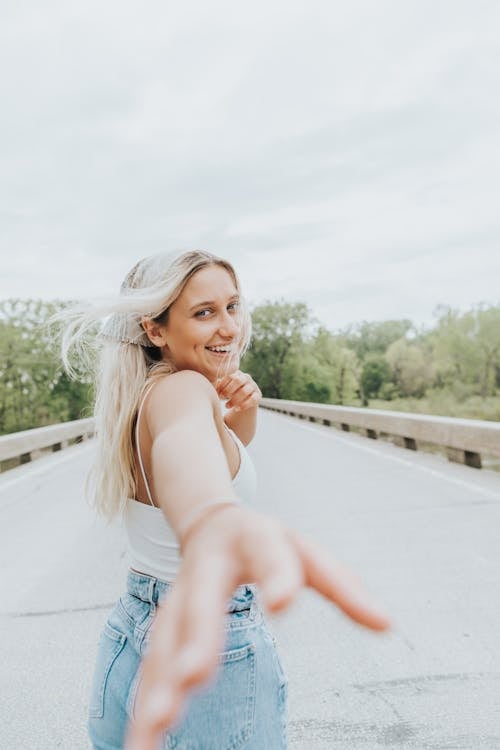
Not only does the model's arm lead the gaze right to her smile, the railings behind her also subtly frame her face.
Photo by WoodysMedia · View Photo
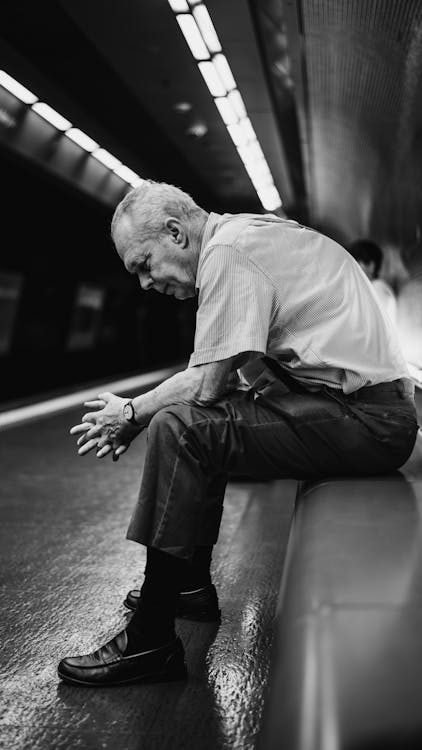
The lines of the lights in this image help convey emotion, pointing to the man's hunched back and lowered head to emphasize the tired feeling he gives off.
Photo by Alessio Cesario · View Photo
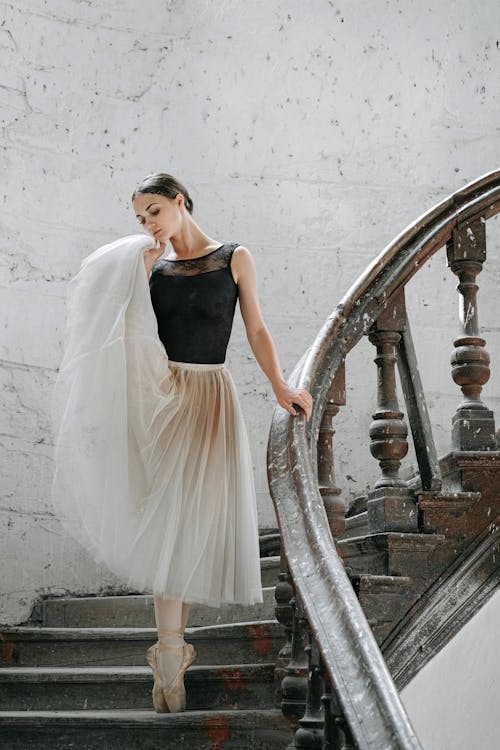
Here, the line of the staircase railing draws the eye up to meet the ballerina's arm, following a path that ends at her face.
Photo by Ivan Samkov · View Photo
Using leading lines for a better photo
In conclusion, leading lines can help increase the visual impact of all sorts of photos. Whether you're shooting indoors or out, no matter the subject matter, this composition technique can help highlight the subject of your photo, hold the attention of the viewer, draw attention to important elements of the shot, and simply create a more compelling image.
Pexels is a platform for high quality stock photos you can use for free.
Browse free photos




